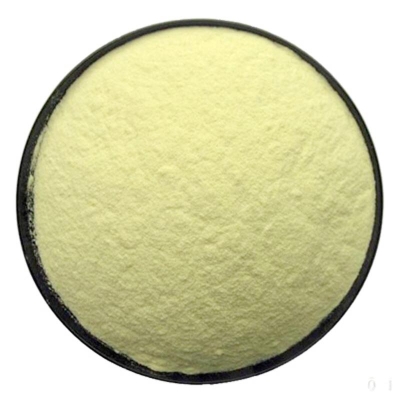-
Categories
-
Pharmaceutical Intermediates
-
Active Pharmaceutical Ingredients
-
Food Additives
- Industrial Coatings
- Agrochemicals
- Dyes and Pigments
- Surfactant
- Flavors and Fragrances
- Chemical Reagents
- Catalyst and Auxiliary
- Natural Products
- Inorganic Chemistry
-
Organic Chemistry
-
Biochemical Engineering
- Analytical Chemistry
- Cosmetic Ingredient
-
Pharmaceutical Intermediates
Promotion
ECHEMI Mall
Wholesale
Weekly Price
Exhibition
News
-
Trade Service
At present, the quality evaluation and decision-making implementation in tea processing still rely on the personal experience of tea masters, and there are defects of low accuracy, poor consistency, and inability to quantify judgment, and there is still a lack of scientific, accurate and rapid quantitative intelligent evaluation methods
.
Based on this, the tea quality control and comprehensive utilization team of Anhui Agricultural University has conducted research on the quality evaluation technology of the key processes of red and green tea processing produced in China on the basis of the preliminary work, and developed the intelligent evaluation technology and method of tea processing quality, in order to provide technical support
for the realization of intelligent tea processing during the "14th Five-Year Plan" period.
The results have recently been published in the food science journal Food Chemistry
.
The first two studies respectively developed in situ visualization and quantitative detection technology
for targets based on the quality changes of appearance and endoplasm during the fermentation process of Gongfu black tea.
In the first study, the research team built a low-cost computer vision system to simulate human visual function to quickly perceive
the appearance quality of fermented tea samples 。 Aiming at the key indicators of catechins, theaflavins and chlorophyll that cause appearance changes during fermentation, the correlation between each quality index and the color variables in the visual image was analyzed, and the characteristic color variables with strong correlation were screened.
Through multi-sample combined with chemometric modeling, quantitative prediction models of each quality index were established.
By extracting pixel-level information one by one for model inversion, combined with chemical pseudo-color imaging, a visualization chart
of the content and distribution of key quality indicators in the fermentation process was drawn.
In the second study, the research team used phenolic substances as the key indicators
for the endoplasmic changes caused by the reduction of phenolic oxidation during fermentation.
Based on the principle of reversible covalent binding of phenylboric acid and catechols, phenylboronic acid was selected as the acceptor for directional binding with polyphenols, and catechol violet and alizarin red S were used as indicators for the reaction, and an indicator displacement array IDA sensor
was developed.
Firstly, the feasibility of IDA reaction with catechin standards was verified, and it was found that when the receptor was added to the indicator, the indicator showed obvious color change and ultraviolet absorption peak shift.
When the reactant catechins are added to the receptor-indicator mixture, the catechins competitively bind to the receptor, leaving the indicator out of treatment and taking on its original color
.
Based on this, the IDA sensor was used for the detection of real fermentation samples, and it was found that the color development reaction of tea samples with different fermentation degrees showed differences, and the color development difference values showed a strong correlation
with the polyphenol concentration in fermentation samples.
The correlation model between IDA color rendering difference value and polyphenol content is established by stoichiometry means, and the polyphenol content can be quickly predicted by collecting IDA color rendering difference value by computer vision system, so as to realize the qualitative and quantitative evaluation of fermentation degree
.
Compared with traditional artificial visual evaluation, the technical equipment developed by the first two institutes has the advantages of low cost, high accuracy and accurate quantification of results, which is suitable for online monitoring
of the quality of black tea fermentation process.
In the third study, the research team carried out research on the rapid detection of green tea processing moisture, and developed an online detection technology
for moisture in the green tea finishing process.
Moisture is a key monitoring index in the processing of agricultural products (including tea), and it is of great significance
to realize online monitoring of moisture in processing to optimize processing decisions and stabilize product quality.
Near-infrared spectroscopy can be successfully applied to tea moisture detection, mostly based on detection models
developed by laboratory equipment.
Due to factors such as instrument cost, size, and testing conditions, laboratory equipment cannot be directly used in production practices
at present.
Developing a dedicated monitoring model for each spectrometer is inefficient and requires a tedious process
of resampling and calibration.
Therefore, the research team proposed the research idea of model transmission from laboratory hyperspectral to online near-infrared, and realized the online monitoring
of moisture in the green tea finalization process.
(Editor Li Chuang)







